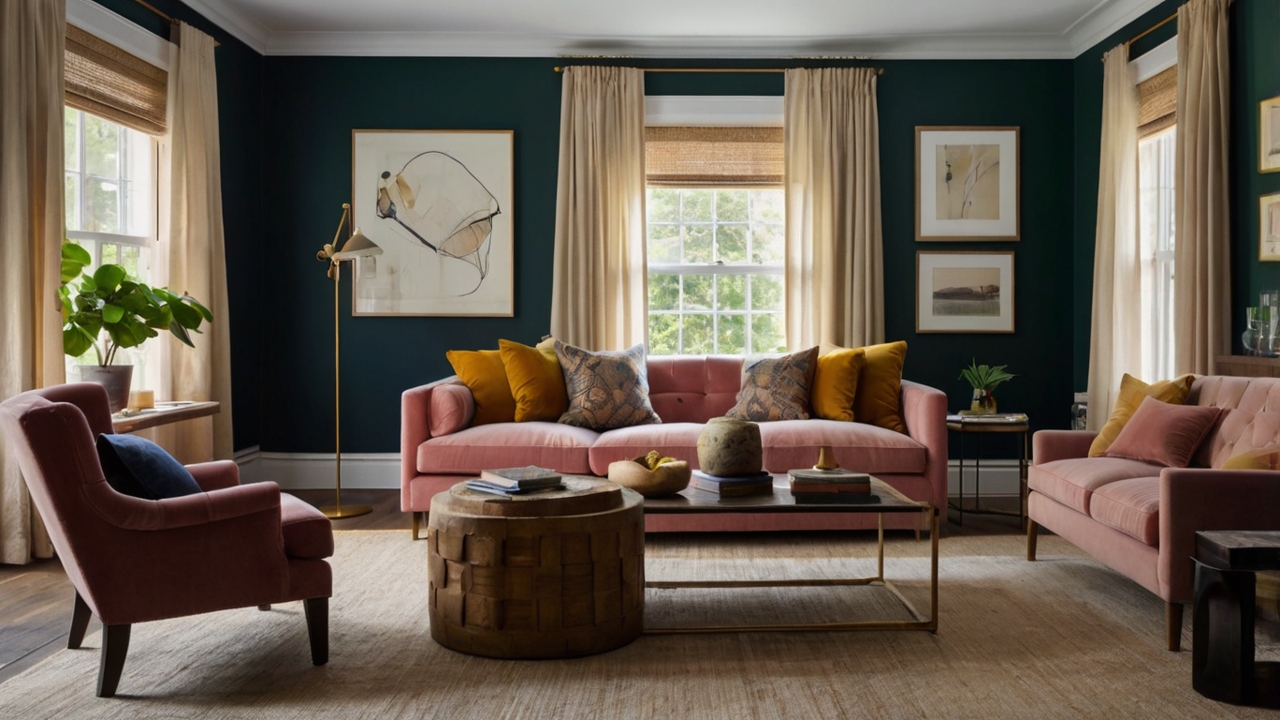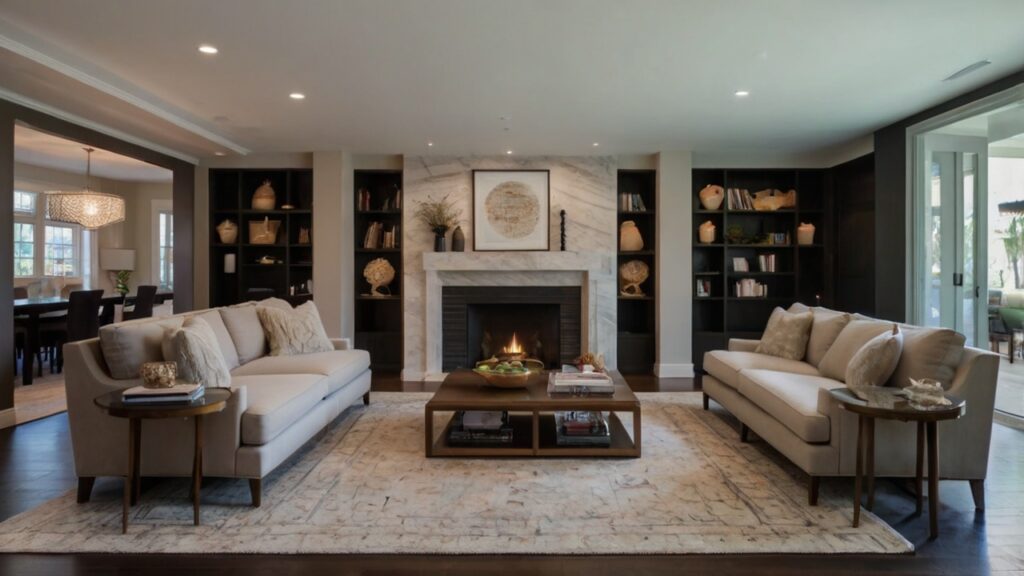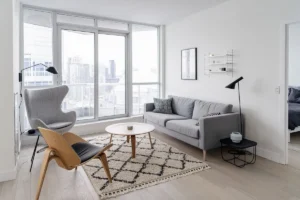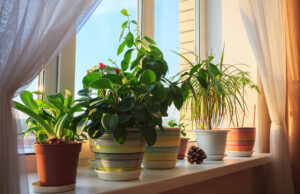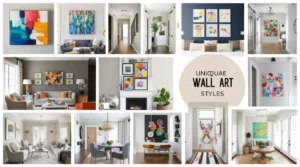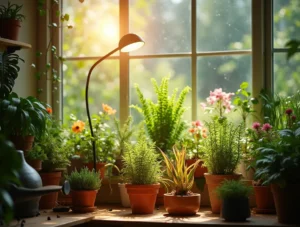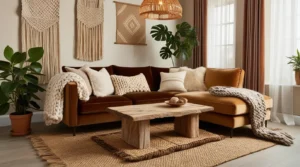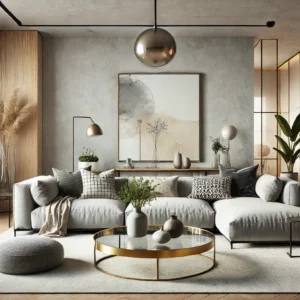In recent years, the trend of incorporating dark colors into living spaces has gained significant traction. Far from creating gloomy or oppressive environments, when done right, dark colors can transform your living room into a sophisticated, cozy, and utterly captivating space. In this comprehensive guide, we’ll explore unique ways to work with dark hues, address common concerns, and provide expert tips to help you create a stunning dark-themed living room.
On This Page
Understanding the Psychology of Dark Colors
Before we dive into the practical aspects, it’s important to understand the psychological impact of dark colors in interior design:
- Coziness and Intimacy: Dark colors can create a sense of enclosure, making large spaces feel more intimate and inviting.
- Sophistication and Luxury: Deep, rich hues are often associated with elegance and opulence.
- Calmness and Relaxation: Contrary to popular belief, dark colors can have a calming effect, creating a peaceful sanctuary.
- Drama and Depth: Dark walls can serve as a striking backdrop, adding depth and drama to your space.
Understanding these effects can help you make informed decisions about how and where to use dark colors in your living room.
Choosing the Right Dark Colors
Not all dark colors are created equal. Here are some popular dark hues and their effects:

- Navy Blue: A classic choice that adds sophistication without being too severe.
- Charcoal Gray: A versatile neutral that works well with most color schemes.
- Forest Green: Brings a touch of nature indoors and creates a serene atmosphere.
- Deep Purple: Adds a regal touch and works well in rooms with lots of natural light.
- Chocolate Brown: Creates a warm, earthy feel and pairs beautifully with natural materials.
When selecting your dark color, consider the room’s natural light, size, and your overall design aesthetic.
Unexpected Accent Colors: Adding Vibrancy to Dark Walls
When working with dark walls, your choice of accent colors can make or break the overall aesthetic. While white is a classic choice, consider these unexpected pairings for a truly striking look:
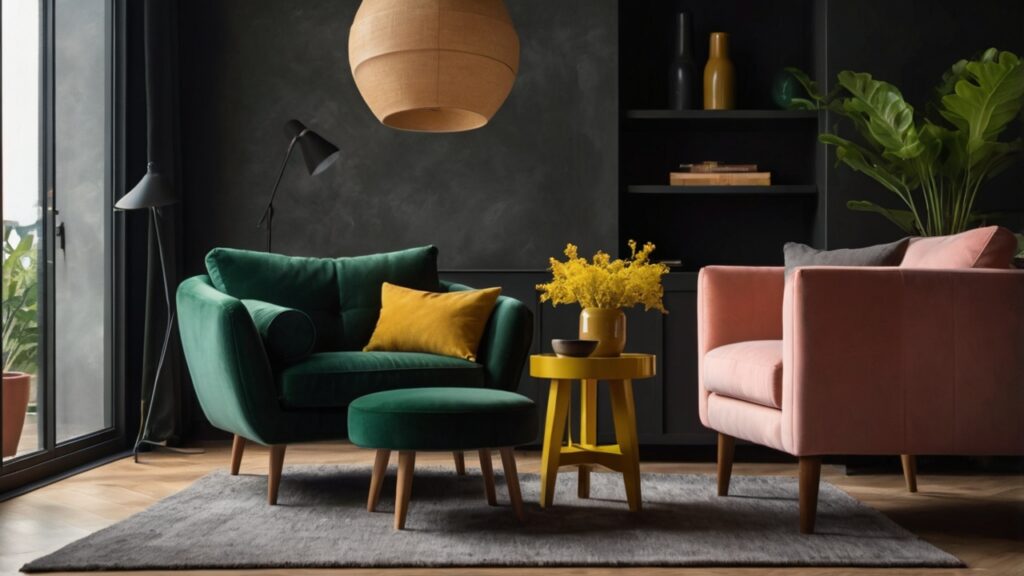
- Mustard Yellow: This rich, warm tone adds a pop of brightness without clashing with darker hues. Use it in throw pillows, artwork, or a statement armchair.
- Emerald Green: Create a luxurious, jewel-toned palette that exudes opulence. Consider an emerald green velvet sofa against dark walls for a truly sumptuous look.
- Coral: For a more daring contrast, coral accents can bring life and energy to a dark room. Try coral curtains or a large piece of coral-themed artwork.
- Dusty Pink: Soften the intensity of dark walls with this subtle yet effective hue. Dusty pink works particularly well with dark gray or navy walls.
- Teal: Combine the calming effects of blue with the vibrancy of green for a refreshing contrast. Teal ceramics or a teal area rug can add a sophisticated pop of color.
- Burnt Orange: This warm, earthy tone complements dark colors beautifully and adds a cozy autumnal feel.
- Lavender: For a softer, more romantic look, pair dark walls with lavender accents. This works especially well in bedrooms or reading nooks.
Remember, the key to using accent colors effectively is balance. Use the 60-30-10 rule: 60% dominant color (your dark walls), 30% secondary color, and 10% accent color.
Balancing Dark Colors with Natural Materials
One of the keys to successfully implementing a dark color scheme is to balance it with natural materials. This combination can prevent the space from feeling too heavy or artificial. Here are some ideas:
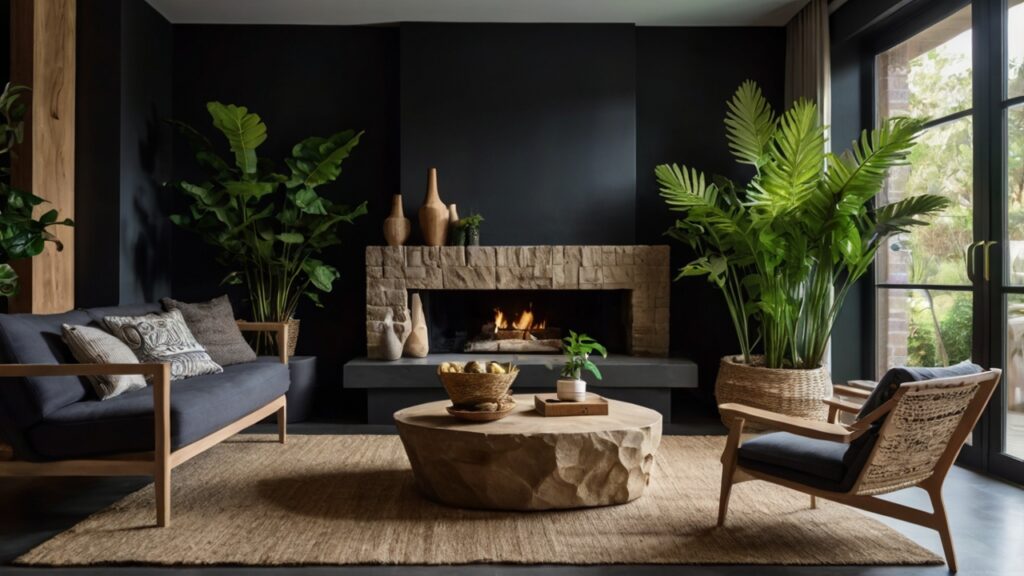
- Wooden Furniture: Opt for light to medium-toned wood pieces to add warmth and texture. Consider a raw edge wooden coffee table or wooden picture frames.
- Jute or Sisal Rugs: These natural fiber rugs provide a neutral base and interesting texture. They also help to lighten up dark floors.
- Woven Baskets: Use these for storage or as decorative items to add a tactile element. Group several baskets of different sizes for a visually interesting display.
- Stone Accents: Incorporate marble or slate in coffee tables or decorative objects. A marble side table can add a touch of luxury to a dark room.
- Indoor Plants: Greenery not only adds life but also creates a beautiful contrast against dark backgrounds. Consider large leafy plants like fiddle leaf figs or smaller succulents for shelves and side tables.
- Natural Fiber Curtains: Linen or cotton curtains in light neutral shades can soften dark walls and add texture.
- Leather Furniture: A rich leather sofa or armchair can complement dark walls beautifully while adding natural warmth.
- Rattan or Bamboo: Incorporate these materials in light fixtures, room dividers, or furniture pieces for an organic, boho-chic vibe.
Creative Lighting Ideas for Dark Living Rooms
Proper lighting is crucial in a dark-colored living room. It can highlight features, create ambiance, and prevent the space from feeling too enclosed. Consider these creative lighting solutions:
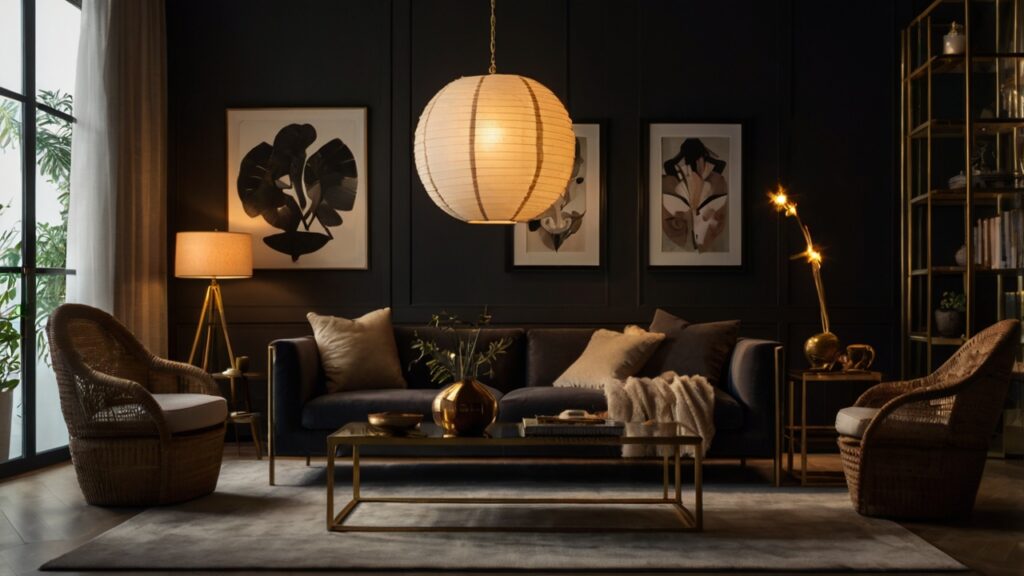
- Backlit Shelving: Install LED strips behind floating shelves to create a soft, ambient glow. This not only illuminates your displayed items but also adds depth to the room.
- Oversized Paper Lanterns: These diffuse light beautifully and add a sculptural element to the room. Group several at different heights for a dramatic effect.
- Picture Lights: Highlight artwork and create pools of light on dark walls. This draws the eye and creates points of interest around the room.
- Floor Uplighters: Place these in corners to wash the walls with light and create the illusion of more space. This technique is particularly effective with textured walls.
- Metallic Pendant Lights: Use brass or copper fixtures to add warmth and reflect light around the room. A large statement pendant can become a focal point in a dark room.
- Candles and Fairy Lights: For a cozy, intimate atmosphere, incorporate candles (real or LED) and string lights. These create a soft, warm glow that’s perfect for evenings.
- Smart Lighting Systems: Install smart bulbs that allow you to adjust the color temperature and brightness throughout the day. Cool light can make the space feel more open during the day, while warm light creates a cozy atmosphere in the evening.
- Neon Signs: For a modern, edgy look, consider a custom neon sign. This can add a pop of color and create a unique focal point.
Remember, layering your lighting (combining ambient, task, and accent lighting) is key to creating a well-lit and inviting dark-colored room.
Enhancing Dark Color Schemes with Texture
Texture plays a vital role in preventing a dark room from feeling flat or one-dimensional. Here’s how you can incorporate various textures:

- Velvet Upholstery: This luxurious fabric adds depth and catches the light beautifully. Consider a velvet sofa or armchair as a statement piece.
- Chunky Knit Throws: These add visual interest and provide comfort. Drape them over sofas or chairs for an inviting look.
- Textured Wallpaper: Consider grasscloth or other textured wallpapers for an accent wall. This adds depth and interest without introducing competing colors.
- Faux Fur Rugs: These add a touch of luxury and softness underfoot. A faux fur rug in a light color can also help brighten a dark floor.
- Textured Artwork: Look for pieces with raised elements or mixed media to add dimension to your walls. Consider tactile wall hangings or 3D art installations.
- Tufted Furniture: Button-tufted sofas or headboards add visual interest and a touch of traditional elegance.
- Woven Wall Hangings: Macramé or woven tapestries can add boho charm and break up large expanses of dark walls.
- Textured Throw Pillows: Mix and match pillows with different textures like silk, linen, and boucle for a layered, sophisticated look.
- Beaded Chandeliers: These not only provide light but also add texture and movement to your space.
Remember, the key is to create contrast. Pair smooth surfaces with rough ones, and soft textures with hard ones for a well-balanced, visually interesting space.
Making a Dark Living Room Feel Spacious
One common concern with dark-colored rooms is that they might feel small or cramped. Here are some tips to maintain a sense of spaciousness:
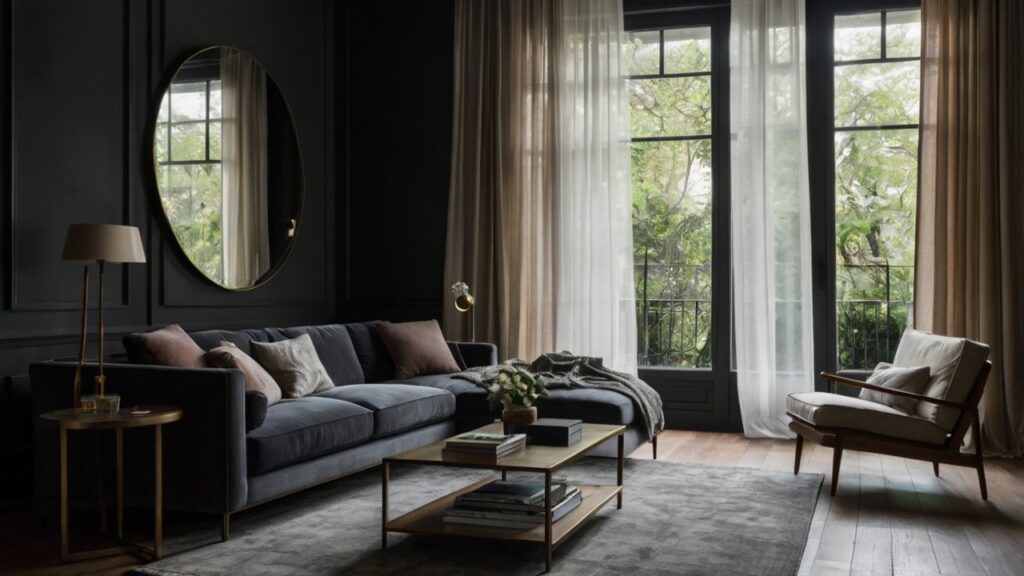
- Use Mirrors Strategically: Place large mirrors to reflect light and create the illusion of more space. A full-length mirror leaning against the wall can dramatically open up a room.
- Keep the Ceiling Light: While dark walls can be dramatic, a light-colored ceiling helps the room feel more open. Consider painting the ceiling a shade lighter than the walls for a cohesive look.
- Minimize Clutter: In a dark room, clutter can feel more oppressive. Keep surfaces clear and organize thoughtfully. Invest in closed storage solutions to hide away unnecessary items.
- Create Depth with Lighting: Use layered lighting to illuminate different areas of the room, creating depth and dimension. Highlight architectural features or artwork to draw the eye around the space.
- Choose Low-Profile Furniture: Opt for furniture with exposed legs to allow light to flow underneath, creating a sense of openness. Avoid bulky, heavy pieces that can make the room feel cramped.
- Use Vertical Space: Draw the eye upward with tall bookshelves, floor-to-ceiling curtains, or vertical striped wallpaper. This creates the illusion of height and space.
- Incorporate Glass or Lucite: These transparent materials take up visual space without adding heaviness. Consider a glass coffee table or lucite chairs.
- Create Zones: In larger spaces, use area rugs or furniture arrangement to create distinct zones. This can actually make the space feel larger and more functional.
- Keep Window Treatments Simple: Avoid heavy, dark curtains that block natural light. Opt for sheer curtains or simple blinds that can be fully opened during the day.
Maintaining and Evolving Your Dark-Colored Living Room
Once you’ve created your perfect dark-colored living room, it’s important to maintain and evolve the space:
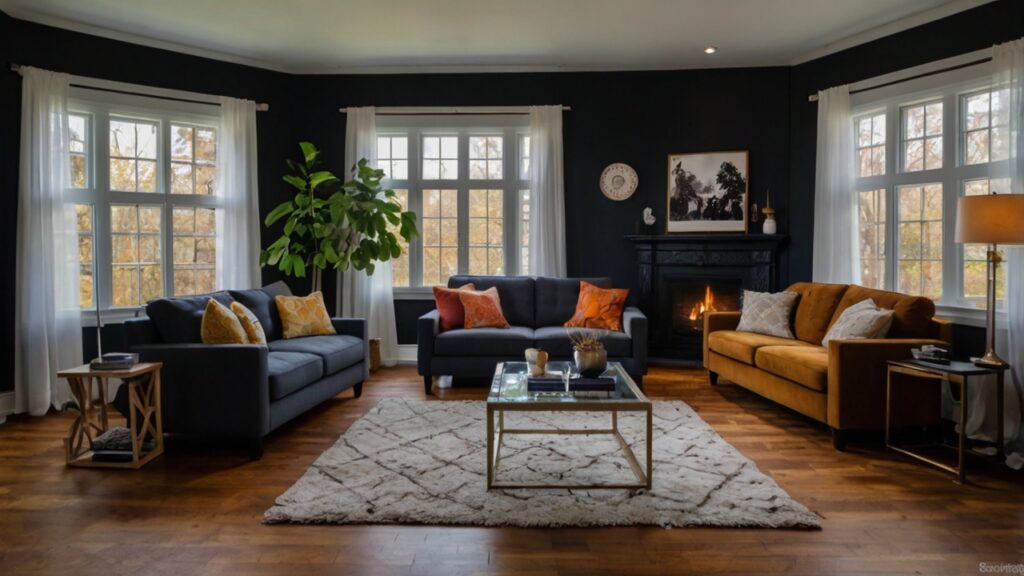
- Regular Cleaning: Dark colors, especially on walls, can show dust more easily. Regular dusting and cleaning will keep your space looking fresh.
- Seasonal Updates: Change out accent pieces seasonally to keep the room feeling fresh. Light, breezy fabrics in summer can be swapped for cozy, rich textures in winter.
- Evolve Gradually: As your tastes change, don’t be afraid to evolve your space. Start with small changes in accessories before committing to major overhauls.
- Maintenance: Touch up any scuffs or marks on dark walls promptly to keep them looking their best.
- Embrace Change: Remember that your living room should reflect your personality and lifestyle. As these change, allow your space to change with you.
By incorporating these ideas and techniques, you can create a dark living room that’s not only dramatic and cozy but also spacious, inviting, and uniquely yours. Remember, the key is to balance dark colors with light accents, varied textures, and thoughtful lighting. With these techniques, you can master the art of dark interiors and create a living space that’s truly unforgettable.
